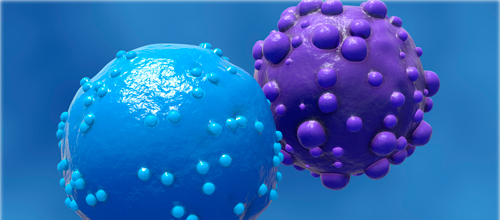December 13, 2017 (Medical News Today)
Lung cancer is the most common cause of cancer-related deaths worldwide. It is the second most common cancer among men and women in the United States.
Current clinical trials of immunotherapy for treating lung cancer have “yielded promising results.” These drugs work by targeting a pathway that cancer has used to escape immune system response. In this pathway, a protein called program death-ligand 1 (PD-L1) sits on the surface on tumor cells and when an immune T cell attempts to attack a lung cancer cell, its PD-L1 paralyses it and stops it from attacking cancer cells.
Despite efforts to shut down this pathway, it has not proven to be enough, given that this treatment only works on a small percentage of lung cancer patients.
In this study, researchers set up a way to better understand the “immune compartment of lung tumors” by studying their microenvironment, and what exactly in that microenvironment drives disease progression. Genetically engineered mice were used to develop a form of lung cancer that is similar to the type that arises in humans. By studying the many types of immune cells in and around the tumors, they established an “immune signature” for lung cancer and found that a type of immune cell called “Gr1+ neutrophils” were contributing to cancer progression.
The researchers then ran “depletion experiments” to see what occurs in these tumors when these neutrophils are significantly decreased. In doing so, the absence of neutrophils completely changed the microenvironment and allowed T cells to stream in.
Further, neutrophils were discovered to promote the production of a protein called Snail which helps tumors become treatment-resistance. In turn, Snail production gives rise to the production of a protein called Cxcl2 which allows for neutrophil penetration. All of this creates a “vicious cycle” which accelerates disease progression.
This new understanding will hopefully allow researchers to focus on developing a better immunotherapy against lung cancer.




